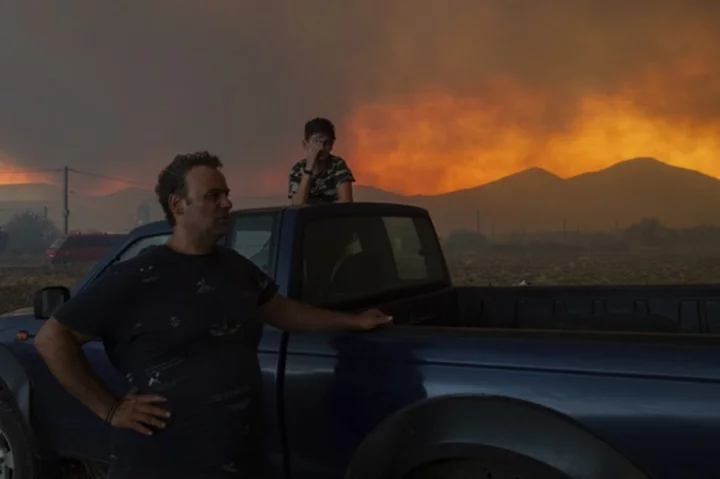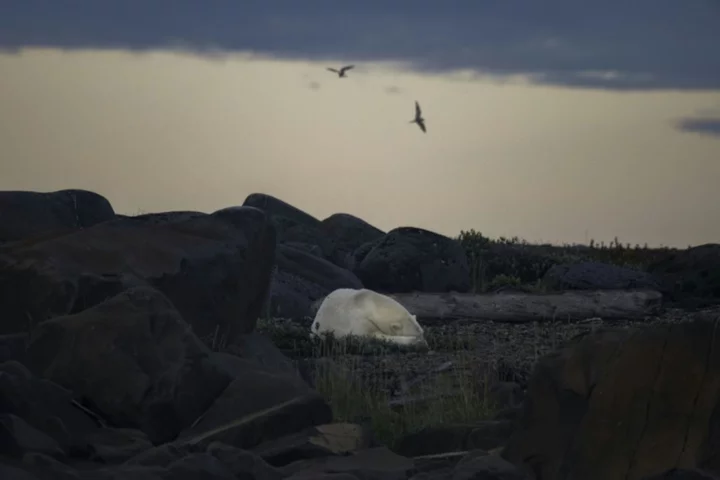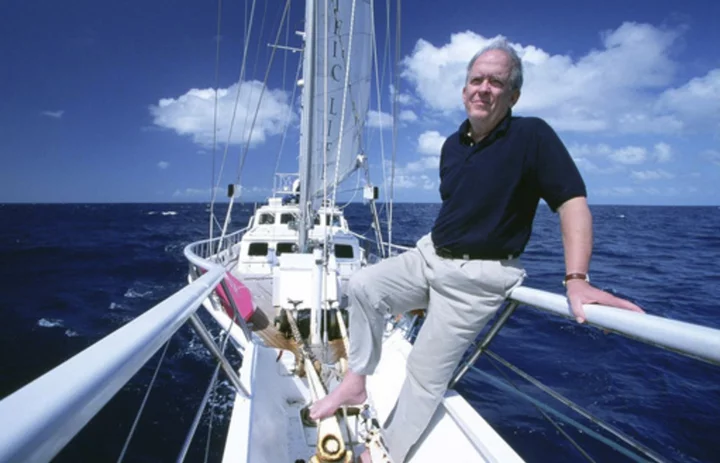The destructive power of wildfire has been a defining feature of a summer of climate extremes.
Dozens of people on multiple continents have died. Blazes have reduced homes and businesses to rubble. Thick smoke has darkened skies and carried fine-particle pollution thousands of miles from its source.
It's a ghastly pattern that climate scientists around the world say has been worsened and fueled by human-caused global warming. Greenhouse gas emissions have greatly increased the chances of hot, dry weather that makes severe fires more likely. And while proper management can help — for instance, controlled burns and clearing out overgrown forests — it's not always enough to beat the odds as climate change drives fire seasons to start earlier and last longer.
The toll on humans will be great. Beyond the immediate aftermath, experts say that exposure to wildfire smoke can cause long-term issues for human health, with respiratory effects like asthma and COPD as well as impacts on the function of the heart, brain and kidneys. The psychological damage, too, can be lifelong. People in the direct path of wildfires may experience post-traumatic stress or struggle with their mental health after losing their loved ones, homes or livelihoods.
Fire is just one face of climate change, which also drives broiling heat, catastrophic storms and floods and other wacky weather. But the dramatic images of this summer's infernos, from flames to ash, are a stark reminder of just how much things have changed, and how much we still stand to lose.
WINDS WHIP UP FLAMES IN GREECE AND TURKEY
A blaze rampaging through northeastern Greece on Tuesday killed 18 people, believed to be migrants crossing the border from Turkey, where, in that country too, villages of a northwestern province have been evacuated to protect people from wildfires. In the Greek city of Alexandroupolis, health authorities partially evacuated a hospital, and other flames near the capital traveled into Parnitha national park, a green area to the northwest of Athens.
Firefighters in Greece have confronted more than 350 fires over five days. Gale-force winds have made the task more challenging, and the hot and dry summer conditions have been some of the worst since meteorological records have been kept, authorities said. Across Europe, many areas have experienced a brutally hot summer as global heat records sweltered to all-time record highs in July.
The Greek government is planning tougher penalties for arson in the wake of the damage, but the extra heat from climate change is also to blame. And the fires only add to the cycle of warming: Greece saw its highest wildfire-related emissions on record this July, according to data from the Copernicus Atmosphere Monitoring Service, part of the European Union's Earth observation program.
PANIC AND SORROW ON A RAVAGED MAUI
It started with a brush fire overnight in Kula. Then a grass fire across the island near Lahaina started in the early morning and jumped a containment line by the afternoon.
Without any warning, residents say they were unable to save many of their neighbors, including children. People tried to rush out of Lahaina even as closed roads hindered evacuation efforts. Some, trapped in their cars, jumped over a seawall into rough waves to escape.
Eventually the wreckage became clear: historic Lahaina had become the site of the deadliest U.S. wildfire in over 100 years.
Researchers say that climate change and land use changes amplified the cost of human error in this catastrophe, as wildfire, storms, floods and other disasters have been on the rise in Hawaii. Flash droughts, which happened this summer and are more likely as a result of global warming, can create an abundance of dry grass on the islands in a short amount of time. And as some plantation agriculture has shifted to ranching, more areas now act as kindling, fueling the problem even further.
President Joe Biden and first lady Jill Biden took an aerial tour of the devastation in Hawaii on Monday. In his remarks in Lahaina, Biden made reference to the burned but surviving banyan tree considered beloved and sacred by many in the island community. The damage is overwhelming and the cleanup will be hard and long, Biden said.
But he added that a Native Hawaiian leader he'd spoken to had called the tree a “diamond in the rough of hope.”
CONFLAGRATION IN THE CANARY ISLANDS
Like much of mainland Spain, the popular tourist destination Tenerife has been in drought for the past several years due to climate change's impacts on regional weather patterns. Those changes created the perfect kindling for what police said was an arson wildfire that raged out of control over several days.
Firefighters managed to limit the damage, with no injuries reported and no houses burned as of Monday, but access remains difficult, especially in steep and craggy mountainous areas. In the meantime, thousands of people on the island were evacuated or ordered to stay indoors.
In addition, Spain continues to sweat under another summer heat wave, with temperatures soaring as high as 111 degrees Fahrenheit (44 degrees Celsius) in some parts of the country.
OVER A THOUSAND FIRES ACROSS CANADA
This summer marks Canada's worst wildfire season on record, and dozens of cities across North America have woken up to see — and smell — the massive plumes of smoke stretching out well beyond the forests where they first sparked. Areas closer to the poles are seeing accelerated changes due to global warming, and Canada is no different. Summers are more intense and winters are warmer. Ice doesn't form as early and melts faster in spring.
Indigenous communities were disproportionately evacuated by Canadian wildfires this summer, even in far northern regions where wildfires are normally never an issue. Their homes can be in more isolated and fire-prone areas, including the boreal forest, a vital natural resource that stores carbon, purifies the air and water and regulates climate.
Some evacuees piled kids and pets into travel centers. Parents held children as they waited to go home, a prospect that may be coming sooner as better weather arrives in some regions. Others watched from tents at a free campsite as the aurora borealis flickered over their temporary refuge. Like the banyan in Hawaii, it was a source of beauty despite what had been lost.
___
Associated Press climate and environmental coverage receives support from several private foundations. See more about AP’s climate initiative here. The AP is solely responsible for all content.









